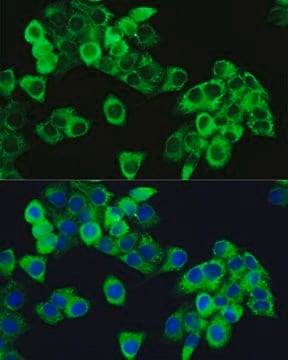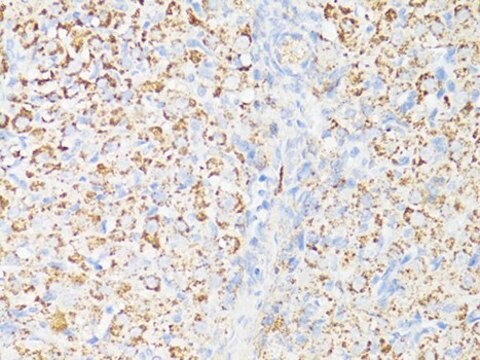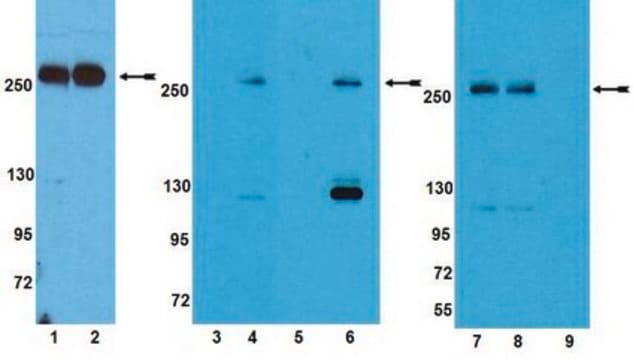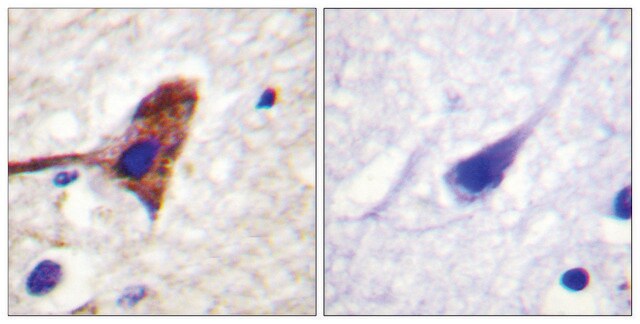09-213
Anti-phospho-mTOR (Ser2448) Antibody
Upstate®, from rabbit
Synonyme(s) :
FRAP1, FRAP, FRAP2, RAFT1, RAPT1, FK506 binding protein 12-rapamycin associated protein 1
About This Item
Produits recommandés
Source biologique
rabbit
Niveau de qualité
Forme d'anticorps
affinity purified immunoglobulin
Type de produit anticorps
primary antibodies
Clone
polyclonal
Produit purifié par
affinity chromatography
Espèces réactives
human
Conditionnement
antibody small pack of 25 μg
Fabricant/nom de marque
Upstate®
Technique(s)
western blot: suitable
Numéro d'accès NCBI
Numéro d'accès UniProt
Conditions d'expédition
ambient
Modification post-traductionnelle de la cible
phosphorylation (pSer2448)
Informations sur le gène
human ... MTOR(2475)
Catégories apparentées
Description générale
Spécificité
Immunogène
Application
PI3K, Akt, & mTOR Signaling
Glucose/Glycogen Metabolism
Insulin/Energy Signaling
Adhesion (CAMs)
Qualité
Western Blot Analysis:
This antibody detected mTOR phosphorylated on Ser2448 in EGF-treated and untreated A431 cell lysates.
Description de la cible
An uncharacterized band may be obsereved at ~59 kDa
Forme physique
Remarque sur l'analyse
EGF-treated and untreated A431 cell lysate.
Autres remarques
Informations légales
Not finding the right product?
Try our Outil de sélection de produits.
En option
Certificats d'analyse (COA)
Recherchez un Certificats d'analyse (COA) en saisissant le numéro de lot du produit. Les numéros de lot figurent sur l'étiquette du produit après les mots "Lot" ou "Batch".
Déjà en possession de ce produit ?
Retrouvez la documentation relative aux produits que vous avez récemment achetés dans la Bibliothèque de documents.
Notre équipe de scientifiques dispose d'une expérience dans tous les secteurs de la recherche, notamment en sciences de la vie, science des matériaux, synthèse chimique, chromatographie, analyse et dans de nombreux autres domaines..
Contacter notre Service technique








